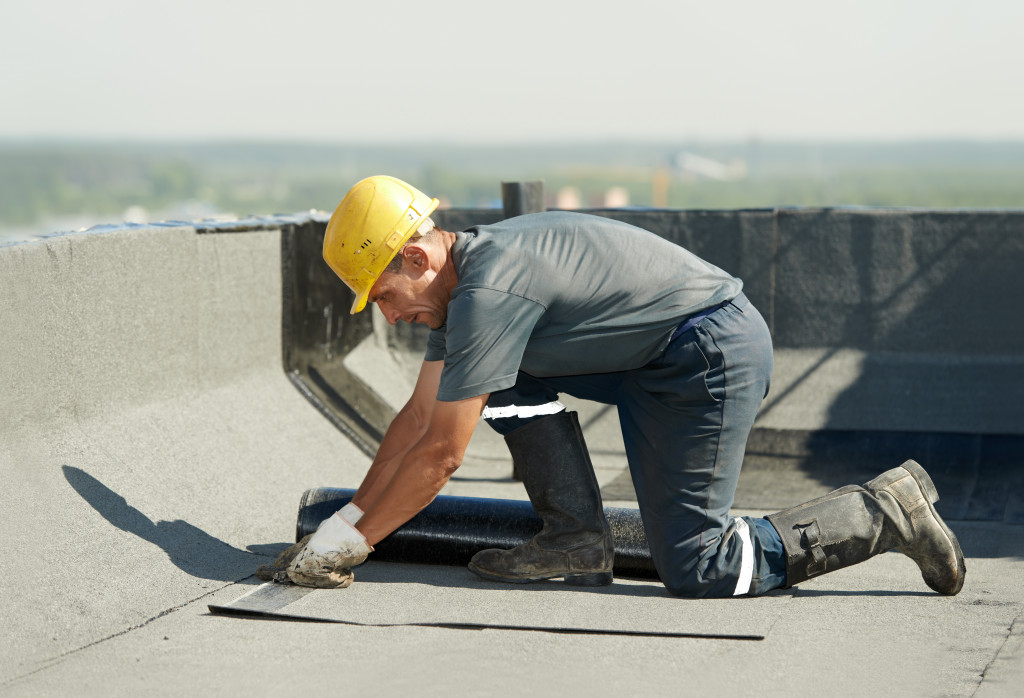So far, in the year 2022, there have been 15 weather disturbances that caused damage of more than $1 billion each throughout the United States. These disasters include one drought, one flood, one wildfire, two tropical cyclones, and 10 severe storms. These catastrophes resulted in 342 deaths and dealt a severe blow to the areas affected from an economic standpoint.
While droughts and wildfires require a different approach, you can reduce the effects of severe storms, floods, and cyclones by waterproofing the home. Waterproofing your home is a crucial step to ensure that your home stays in good condition. Water damage can cause many problems, including mold, mildew, and structural damage. Here are the areas you need to waterproof in your house.
Basements and Crawl Spaces
The two most common areas prone to water damage in the home are basements and crawl spaces. These spaces are often damp and dark, which makes them the perfect breeding ground for mold and mildew. Waterproofing these areas with a sealant or waterproof coating can help keep moisture out. You can also apply reliable concrete sealers in these areas to prevent moisture from accumulating.
In addition to sealers, installing an effective drainage system in these areas can help redirect water away from your home and prevent damage. Installing a sump pump can also be beneficial as it will help draw excess moisture away from the area. Lastly, ensure any potential water sources, such as pipes or air conditioners, are regularly checked for leaks or cracks.
Unfortunately, more than these solutions may be needed to completely prevent water damage. Regular inspections of these areas should ensure they remain dry and free from any standing water. Additionally, using a dehumidifier in the space can help remove any moisture or humidity that could cause mold growth. Taking these preventive steps can help protect your home from lasting water.

Windows
Another area of your home that requires waterproofing is the windows. Windows that are not properly sealed will let moisture in, which can lead to rot and other forms of water damage over time. To protect your windows from moisture, use high-quality sealants or caulk around them and ensure they are always closed when not in use.
You may also want to consider having a professional window installer come in and replace any old, cracked, or poorly sealed windows with new ones. Prevention is the best form of protection when it comes to waterproofing your windows.
In addition to sealing and replacing your windows, you should also check to ensure they are not blocked by debris or other items. If a window is blocked and unable to open, it can create an enclosed area that can trap moisture and cause water damage. Ensure all windows are clean and clear of any obstacles blocking them.
Finally, it would help if you inspected your windows regularly for signs of wear or damage. Look for cracks, gaps, or other damage that could allow moisture in. If you find any of these issues, it is crucial to address them immediately before the problem worsens and more serious water damage occurs.
Roofs
Your roof is one of the most important parts of your home when it comes to waterproofing. If there are any rips or cracks in your roof, it’s essential to get them fixed right away before they worsen due to exposure to moisture or rainwater.
You should also inspect your gutters regularly, so they don’t become clogged with debris like leaves or dirt. The debris can prevent water from draining off properly, leading to leaks or other forms of water damage in the future.
Addressing any potential issues on the roof, such as missing shingles, should also be done as quickly as possible. You should deal with the issue before rainwater seeps into the house through these gaps, causing irreparable harm over time. You can also add a protective layer to your roofs, such as an extra coat of waterproof sealant or other weatherproofing materials.
Lastly, proper ventilation is essential for keeping the temperature and humidity levels within your home balanced. Keeping it balanced prevents the buildup of mold or mildew in certain areas of the house due to moisture accumulation. Installing ridge vents, gable end vents, or soffit vents can help with this.
These steps will ensure that your roof is in good condition, protecting you and your home from the elements. Regular inspection and maintenance will go a long way in helping you keep it waterproof and healthy for many years to come.
Waterproofing certain areas of your home are key if you want it to remain dry and free from water damage for years to come. Basements, crawl spaces, windows, and roofs should all be given extra attention when assessing where existing or potential problems may arise due to moisture intrusion.
Taking proactive steps such as sealing gaps around windows, maintaining gutters regularly, addressing any roof issues immediately, and installing a sump pump can ensure that your home remains dry no matter what Mother Nature throws its way.
